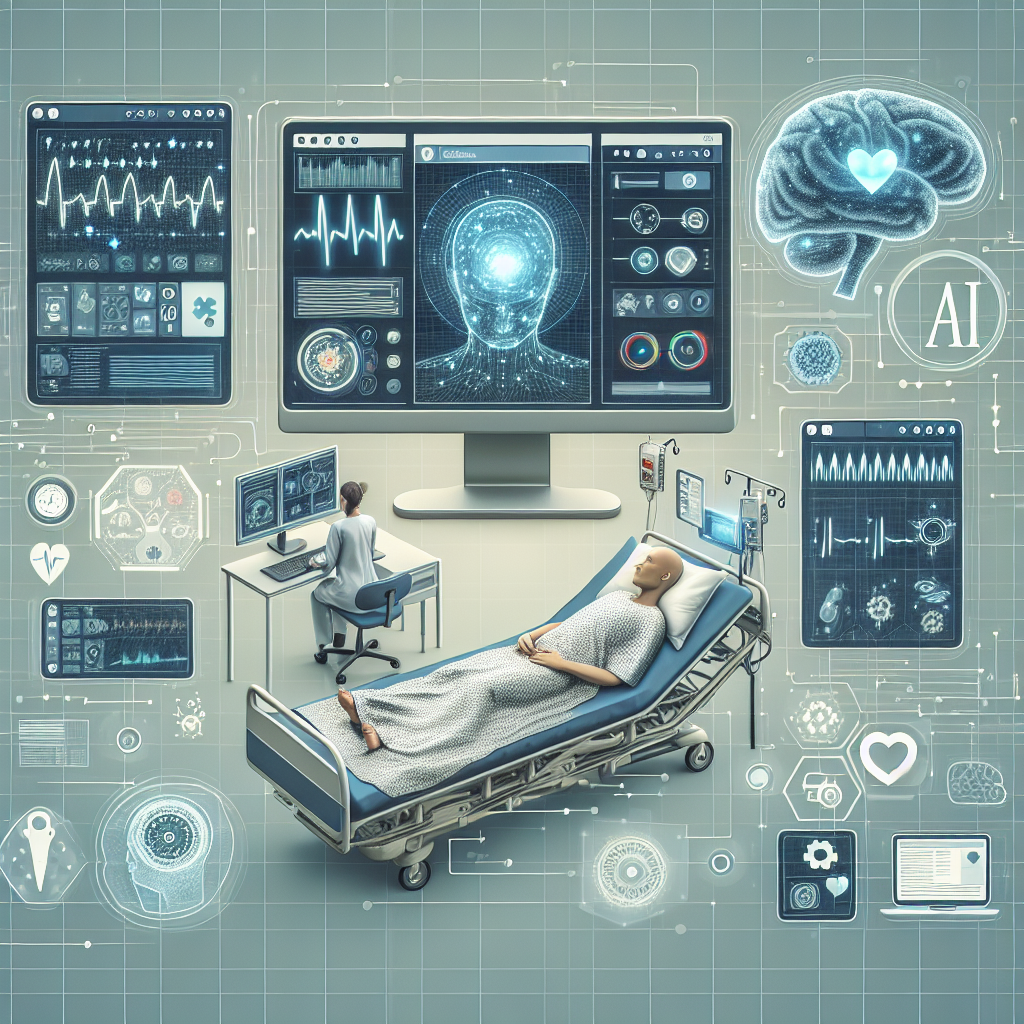Artificial intelligence (AI) has revolutionized many industries, including healthcare. One of the areas where AI has made a significant impact is in remote patient monitoring. Remote patient monitoring allows healthcare providers to monitor patients’ health data in real-time from a distance, allowing for more personalized and efficient care. AI plays a crucial role in analyzing this data and providing insights that can help improve patient outcomes. In this article, we will explore the benefits of AI in remote patient monitoring and how it is transforming the healthcare industry.
Benefits of AI in Remote Patient Monitoring
1. Early detection of health issues: AI algorithms can analyze patient data, such as vital signs, medication adherence, and activity levels, to detect any abnormalities. This allows healthcare providers to intervene early and prevent serious health issues from developing.
2. Personalized care: AI can analyze patient data to create personalized care plans based on the individual’s unique health needs. This ensures that patients receive the most effective treatment for their condition.
3. Improved patient outcomes: By continuously monitoring patients’ health data, AI can help healthcare providers make informed decisions that can lead to better patient outcomes. This includes reducing hospital readmissions, improving medication adherence, and preventing complications.
4. Cost-effective care: Remote patient monitoring powered by AI can help reduce healthcare costs by preventing unnecessary hospital visits and providing more efficient care. This is especially beneficial for patients with chronic conditions who require ongoing monitoring.
5. Enhanced patient engagement: AI-powered remote patient monitoring can engage patients by providing them with real-time feedback on their health data. This can empower patients to take control of their health and make informed decisions about their care.
How AI is Transforming Remote Patient Monitoring
AI has the ability to process vast amounts of data quickly and accurately, making it an ideal tool for remote patient monitoring. Here are some ways in which AI is transforming remote patient monitoring:
1. Predictive analytics: AI algorithms can analyze historical patient data to predict future health outcomes. This can help healthcare providers identify patients at risk of developing complications and intervene before the situation escalates.
2. Remote diagnostics: AI-powered devices can collect and analyze patient data, such as ECG readings or blood glucose levels, remotely. This allows healthcare providers to diagnose and treat patients without the need for an in-person visit.
3. Real-time monitoring: AI can continuously monitor patients’ health data in real-time, providing healthcare providers with up-to-date information on their condition. This can help identify changes in health status quickly and intervene as needed.
4. Medication management: AI can help patients manage their medications by sending reminders to take medication, monitoring adherence, and providing information on potential drug interactions. This can improve patient compliance and reduce the risk of adverse events.
5. Remote consultations: AI-powered chatbots can provide patients with information on their condition, answer questions, and schedule appointments with healthcare providers. This can improve access to care and provide patients with support when needed.
Frequently Asked Questions
Q: How secure is remote patient monitoring powered by AI?
A: Remote patient monitoring systems that use AI are designed to comply with strict security and privacy regulations, such as HIPAA. Data is encrypted and stored securely to protect patient information.
Q: Can AI replace human healthcare providers in remote patient monitoring?
A: AI is meant to augment, not replace, human healthcare providers. While AI can analyze data and provide insights, human providers are still needed to make clinical decisions and provide personalized care to patients.
Q: Is remote patient monitoring affordable for patients?
A: Remote patient monitoring can be cost-effective for patients, as it can reduce the need for frequent hospital visits and prevent complications that may require expensive treatments. Many healthcare providers offer remote monitoring services as part of their care plans.
Q: How can patients access remote patient monitoring services?
A: Patients can access remote patient monitoring services through their healthcare provider or through specialized remote monitoring companies. These services may be covered by insurance or offered as part of a care plan.
In conclusion, AI is transforming remote patient monitoring by providing healthcare providers with valuable insights and improving patient outcomes. By leveraging AI technology, healthcare providers can offer more personalized and efficient care to patients, leading to better health outcomes and reduced healthcare costs. As AI continues to advance, we can expect to see even more innovative solutions in remote patient monitoring that will further improve the quality of healthcare delivery.

